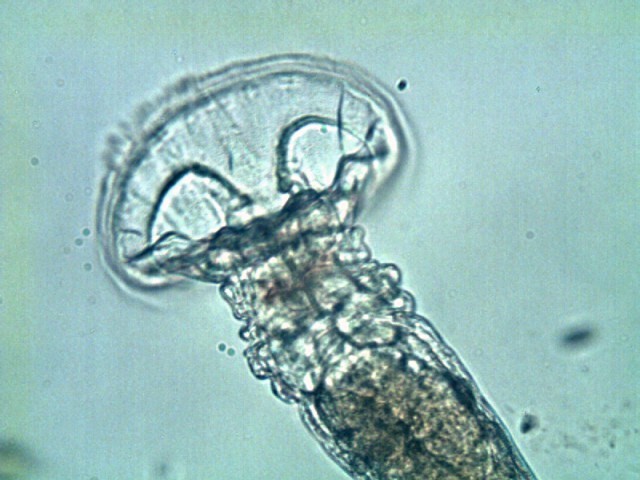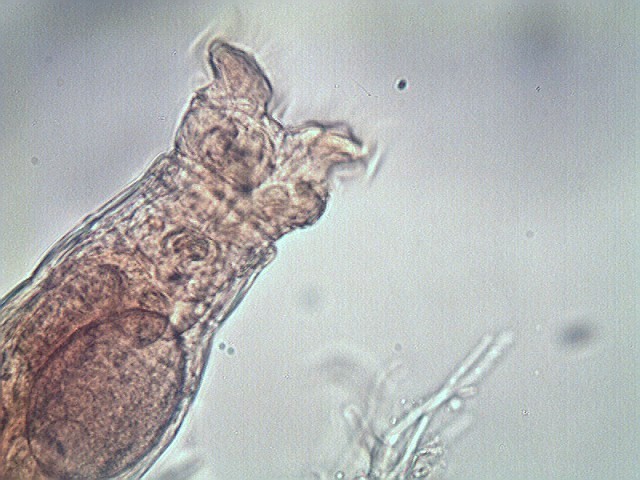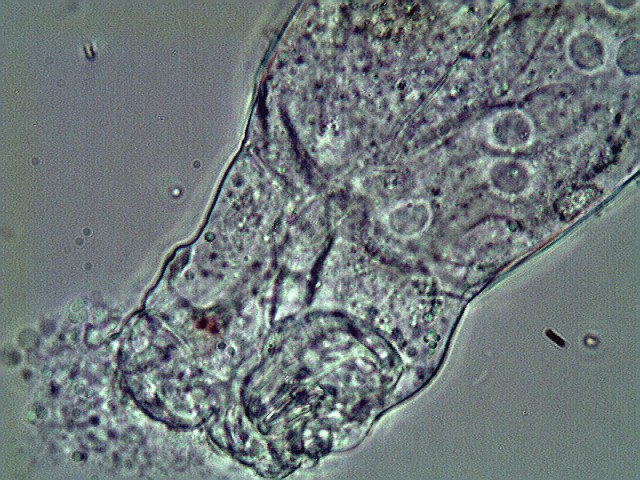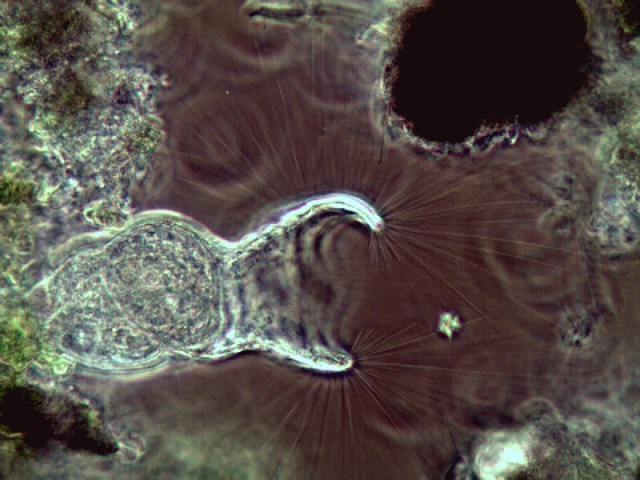Biological Products:
Bioaugmentation products for Wastewater applications in Papermills, Refineries, Chemical, Tanneries, Municipalities, Textiles, Steel, Agriculture, Animal feedlot, Gun Powder plant, Food and Beverage- Dairy Products, Orange Juice factory, Wineries, Cookie factory, Vegetable processing plant, Meat packing, Barbecue Restaurant, Aquaculture, Ornamental Ponds with algae , CAFO, Nursing homes, Military, Campgrounds, Universities, Regulatory agencies, River and Lake remediation
Lab Services:
Filamentous Identification Lab Service. One reason to identify filaments is to determine the filaments characteristics and then determine the type present. If the type is found out, a root cause can usually be associated with a particular filament. If the cause is known, then a correction can be made to alleviate problems. Chlorination is only a quick fix. Without process changes, filaments will grow back after chlorination. Wastewater Biomass Analyses and Cooling Tower Analyses also available
Training Materials:
Training is an integral part of any job. Not everyone is at the same level of training. Many people want beginning concepts and basics. Some need technical information or troubleshooting. Some want equipment, technology or process information. We have developed a full set of Basic training, Advanced training, Filamentous Identification the Easy Way as well as custom training CD's Manuals. We also provide hands-on training classes and soon will have an Online "E-University".
Audits and Consulting:
At Environmental Leverage® Inc., we have a team of experienced individuals who come into your plant with a fresh pair of eyes. The system is checked from influent to effluent. System optimization, equipment efficiency and operational excellence are key components explored. Key Benefits Equipment efficiency Total Cost of Operation reductions Reliability and safety An onsite audit is conducted to examine system parameters, process controls, and current monitor and control procedures. A physical walk-through is conducted, process flow diagrams are examined, previous design criteria are examined and current standard operating procedures are evaluated along with data logs.
|
Rotifers What's New!
We now have a brand new "Higher Life Form videos" in our Training CD list. Check out our new Wastewater Training Materials. We are also in the process of developing new courses for our ""Online University" in order to meet the needs of our global customers that cannot travel to our public classes. WastewaterElearning.com/Elearning
We hope you like the new look of our Higher Life form Identification Pages If you would like more information on bacteria, filaments or higher life forms, you might want to consider purchasing our Wastewater Microbiology Training materials. We also have our lab that can perform a Wastewater Biomass lab analyses of your own MLSS for more information
Rotifers
Identification The rotifers are the most abundant macro invertebrates found in the
activated sludge process. There are about 2000 species, divided into three
classes. Most are fresh water species, but there are a few found in marine
environments.
Most rotifers are colorless, except for the eyespot. However, ingested food may sometimes give the organism the appearance of having color. Rotifers are characterized by the possession of a ciliated area or a funnel-shaped structure at the anterior end that may look like rotating wheels and a specialized pharynx that is part of many pieces that act as jaws. The mouth opening of the rotifer is surrounded by two bands of cilia. The beating of the cilia creates water current for locomotion and food gathering.
Rotifers move by swimming freely or crawling. Rotifers are able to consume both microbes and particulate matter. Like protozoa, these microorganisms are strict aerobes and are more sensitive to toxic conditions than bacteria. Rotifers are found usually in a very stable activated-sludge environment in wastewater treatment plants.
Rotifers range in size from 40 to 500 µm and have an average life span of 6 to 45 days. They are the smallest animals.
Additional Information: Rotifers are metazoa in the phylum Rotifera. Rotifers do have Eyespots. They are often in the same size range as ciliates. Most rotifers have a contractile foot that allows them to attach to activated sludge floc. Some types of rotifers include Keratella, Brachionus, Conochilus, and Polyarthra
Environment They are found in many different types of water, including waste water. They are beneficial in stabilizing organic wastes, stimulating microfloral activity and decomposition, enhancing oxygen penetration, and recycling mineral nutrients. Rotifers are often found in extended aeration systems and systems with a high MCRT. The presence of rotifers in activated sludge generally means a good, stable sludge with plenty of oxygen.
The principal role of rotifers in wastewater is the removal of bacteria and the development of floc. Rotifers contribute to the removal of effluent turbidity by removing non-flocculated bacteria. Mucous secreted by rotifers at either the mouth opening or from the foot aids in better floc formation. Rotifers usually are present in older sludge or longer MCRT. Rotifers indicate increasing stabilization of organic wastes and lower BOD and TSS.
Some plants use rotifers and worms as an indicator to when to increase wasting since it means their sludge is getting older.
How to find them: Microscopic examination of a wet mount. Some of the larger Rotifers can be seen at 40-100x and 200x. Blow them up to 400x and 1000x though to see more details. Rotifers are only found as the sludge age increases because it takes up to three days for their eggs to hatch.
It depends upon what the rest of the biomass looks like. Typically the
presence of Rotifers indicates an older sludge age with low loading of food
vs. the amount of biomass available to stabilize the organics. Rotifers
indicate a relatively healthy, older system, no toxicity, progressing along
in a sludge age towards stable to endogenous age. If mixed in with the right
amount of stalked ciliates, and a few free swimming ciliates, you are probably doing
very well.
Rotifers can reproduce sexually and lay eggs!
If you have once through lagoons, you may find many rotifers, as well as many different types in the same sample. Lagoons differ from activated sludge and the types of higher life forms may vary depending upon the holding time of the lagoon and if a very large lagoon, different sections will have different stages of higher life forms. Rotifers can tolerate lower D.O. than some of the stalks and free swimmers, so they are often present in lagoons in higher numbers.
Daily microscopic analyses is helpful in documenting where you are today, where you have changed since the previous day and how to react to changes proactively as opposed to when they have become critical!
What should I do if there is a
significant change in my higher life forms and all of a sudden there is an
increase in rotifers?
You might want to adjust your wasting or RAS levels.
More to come soon! For more information on Higher Life Form Identification More photos to come. . .
If you need more information on our Filamentous Identification the Easy Way Training CD or on Internet training on Filamentous bacteria, causes and controls. How and why on Wastewater Biomass Analyses
|

 When
trying to determine species, stick to the basics, and focus on the causes
and controls of the higher life forms present. The main point of any
wastewater biomass identification is not
to get a PhD, but to fix your plant!
When
trying to determine species, stick to the basics, and focus on the causes
and controls of the higher life forms present. The main point of any
wastewater biomass identification is not
to get a PhD, but to fix your plant! What
does it mean when I see an increase in Rotifers in my system?
What
does it mean when I see an increase in Rotifers in my system? 


